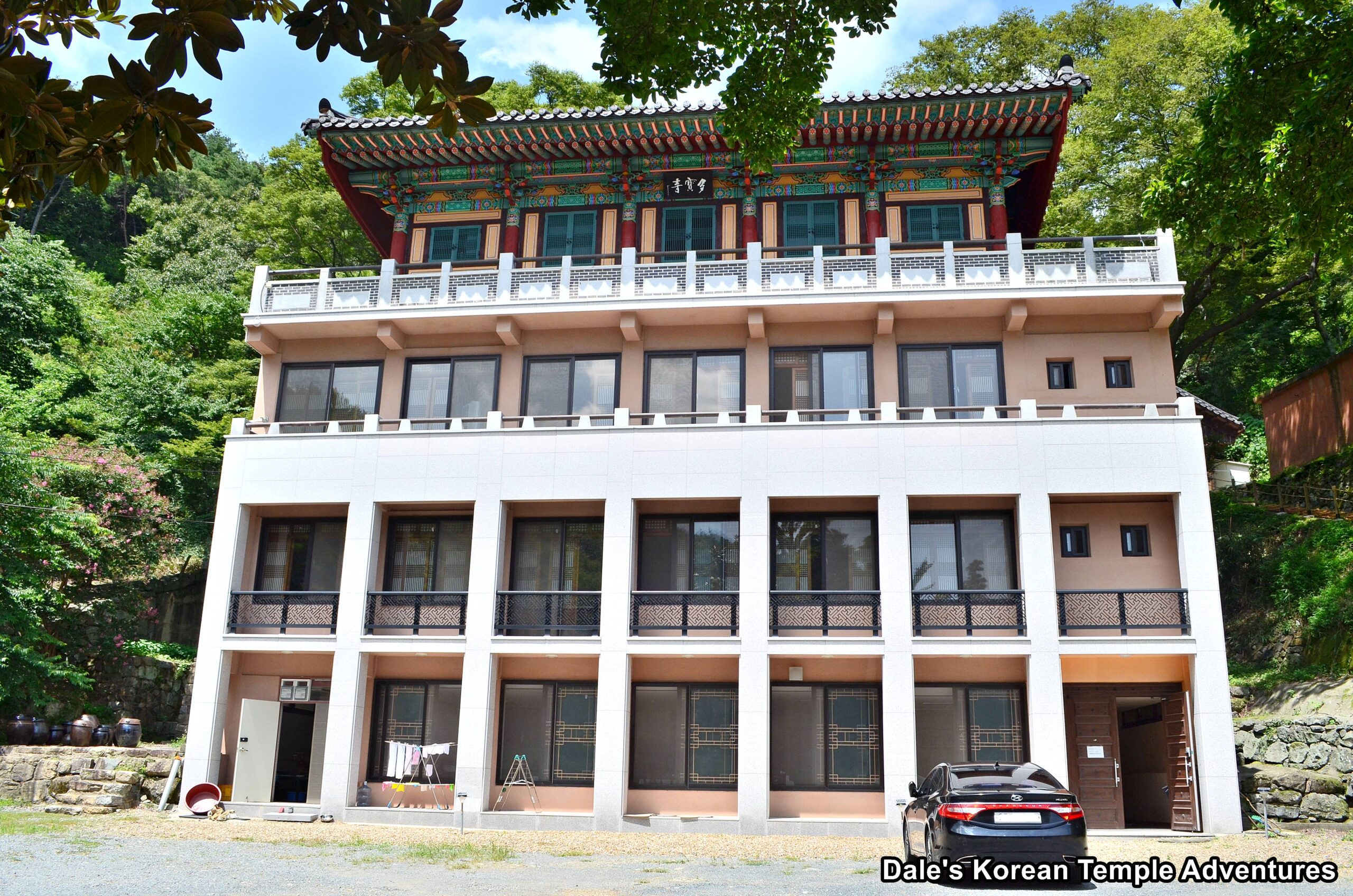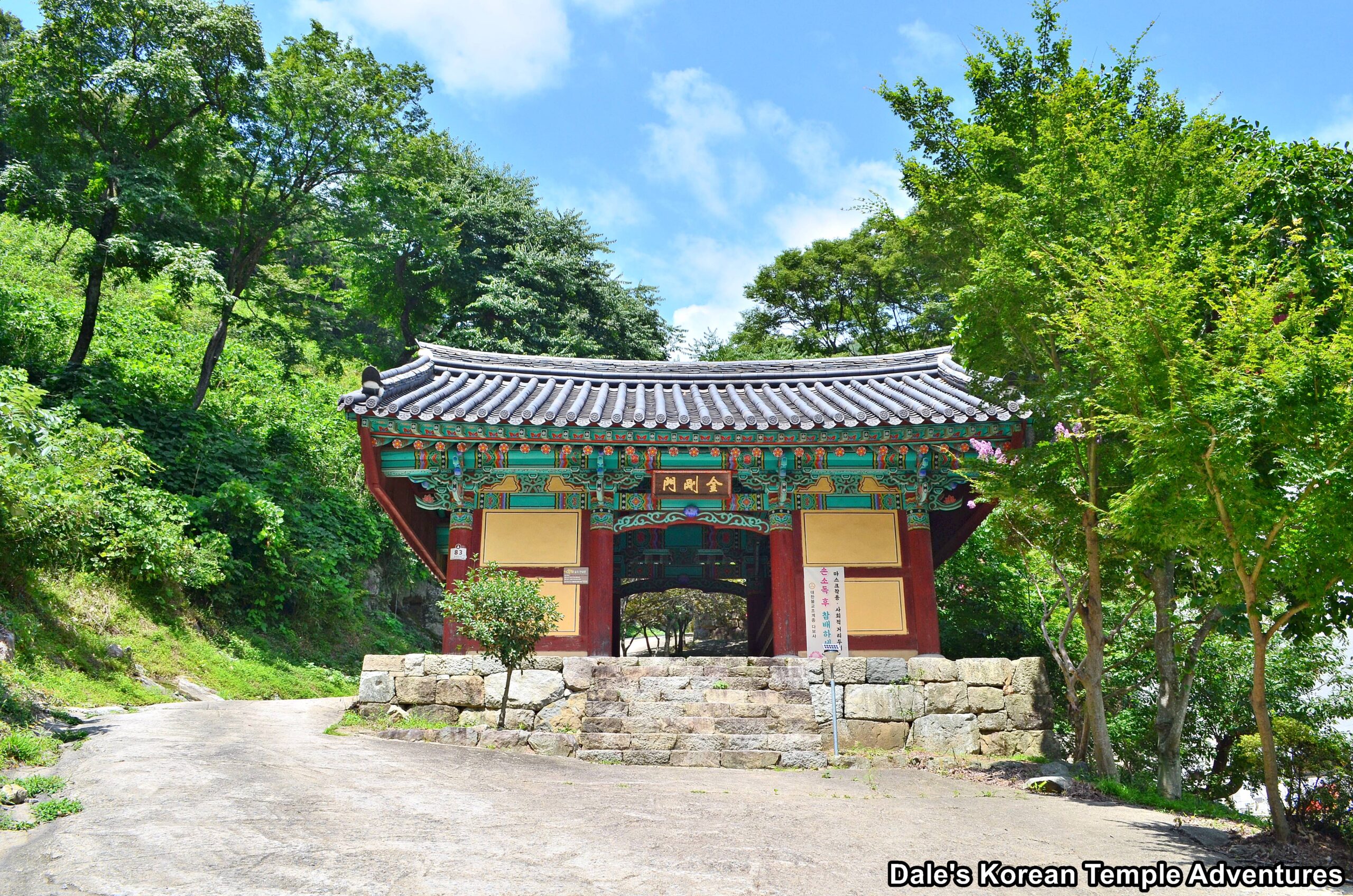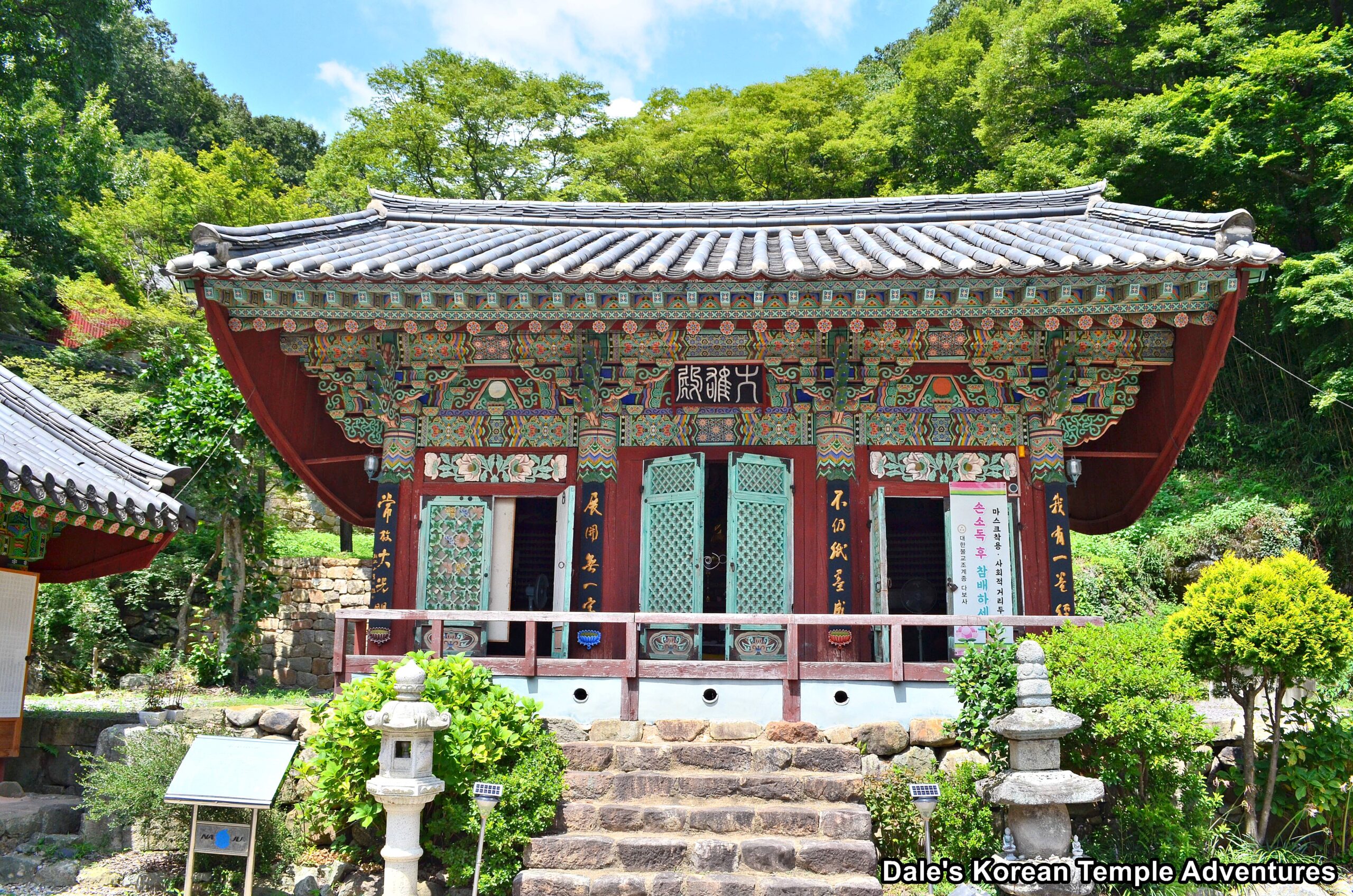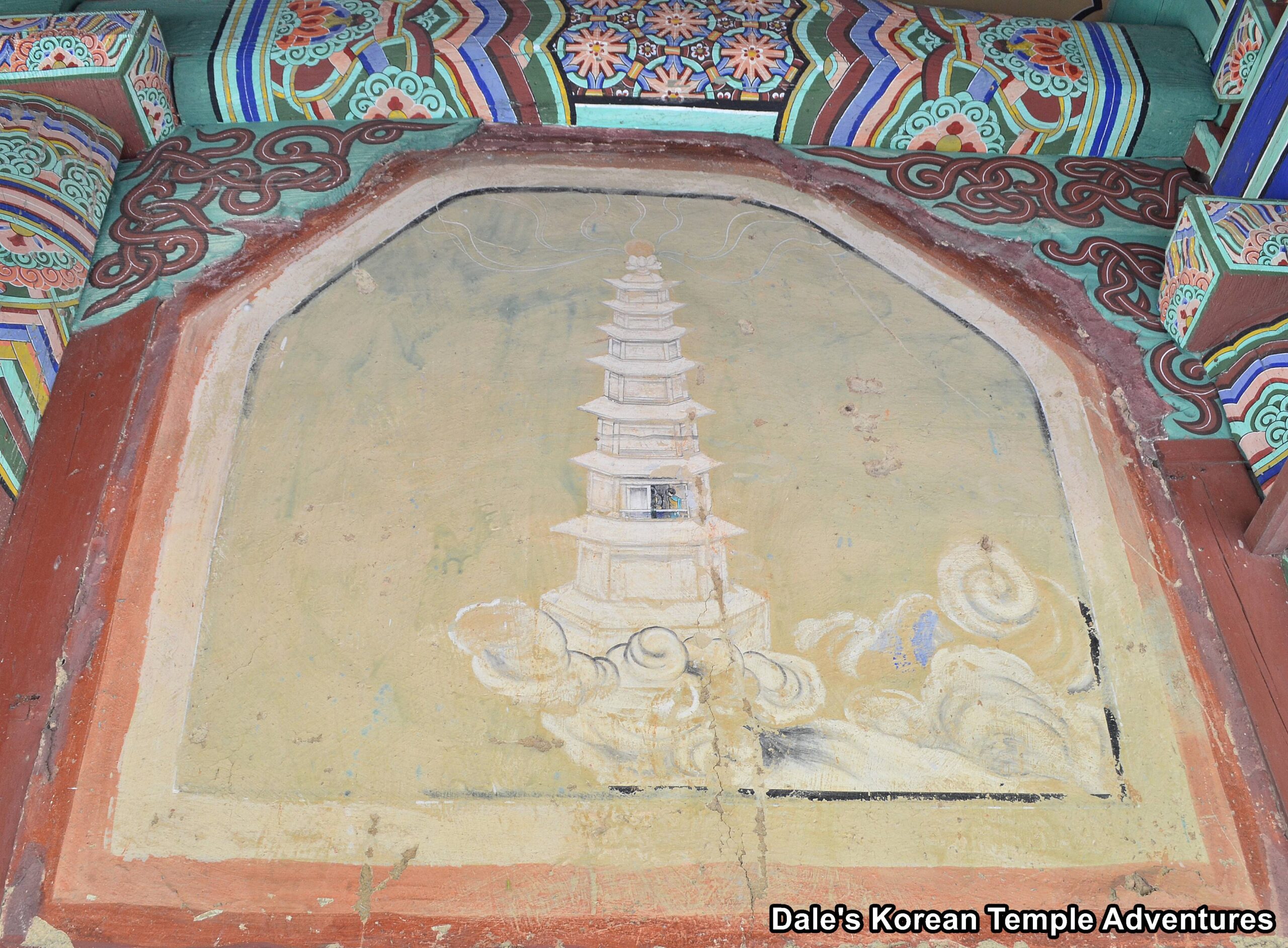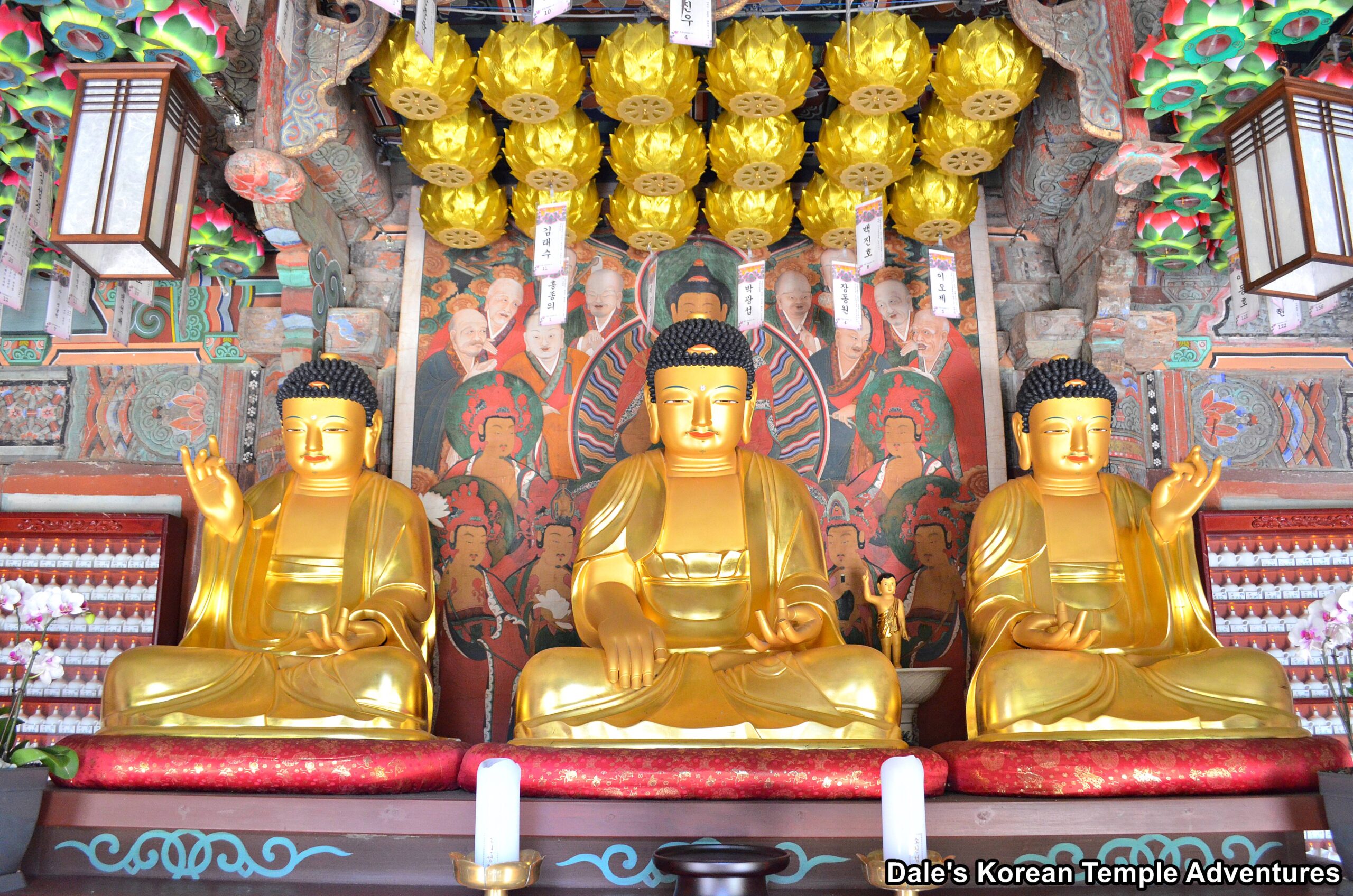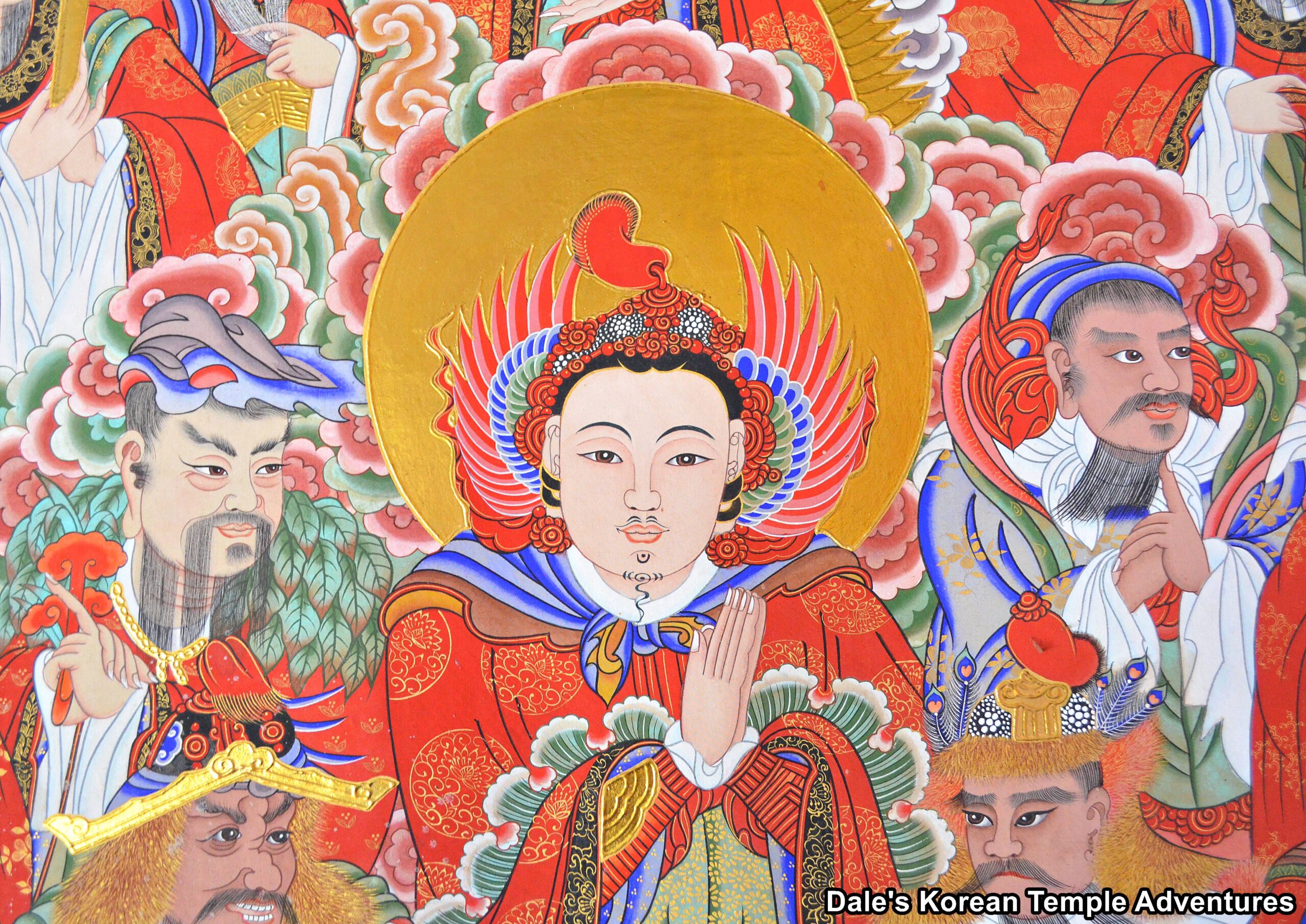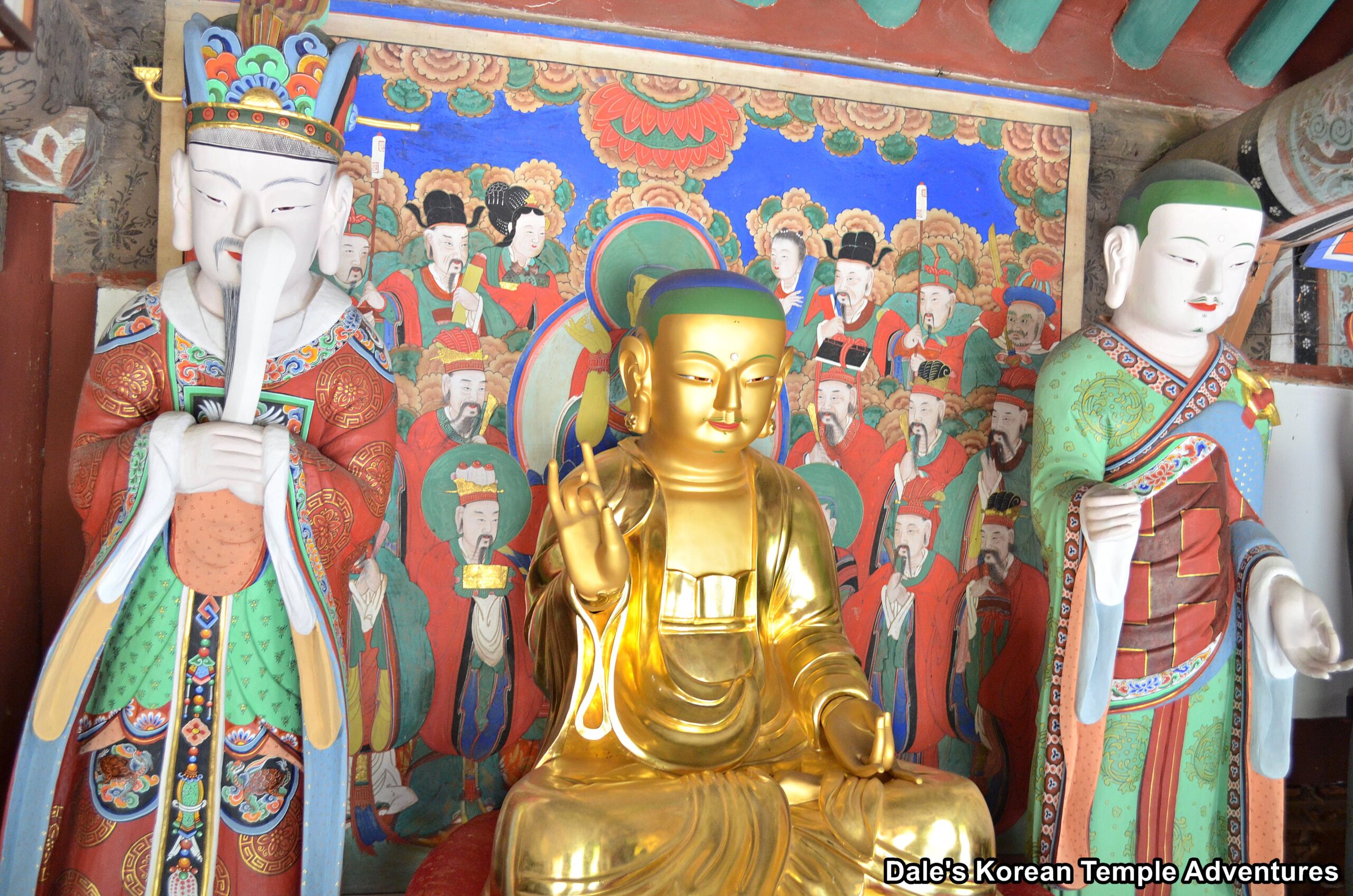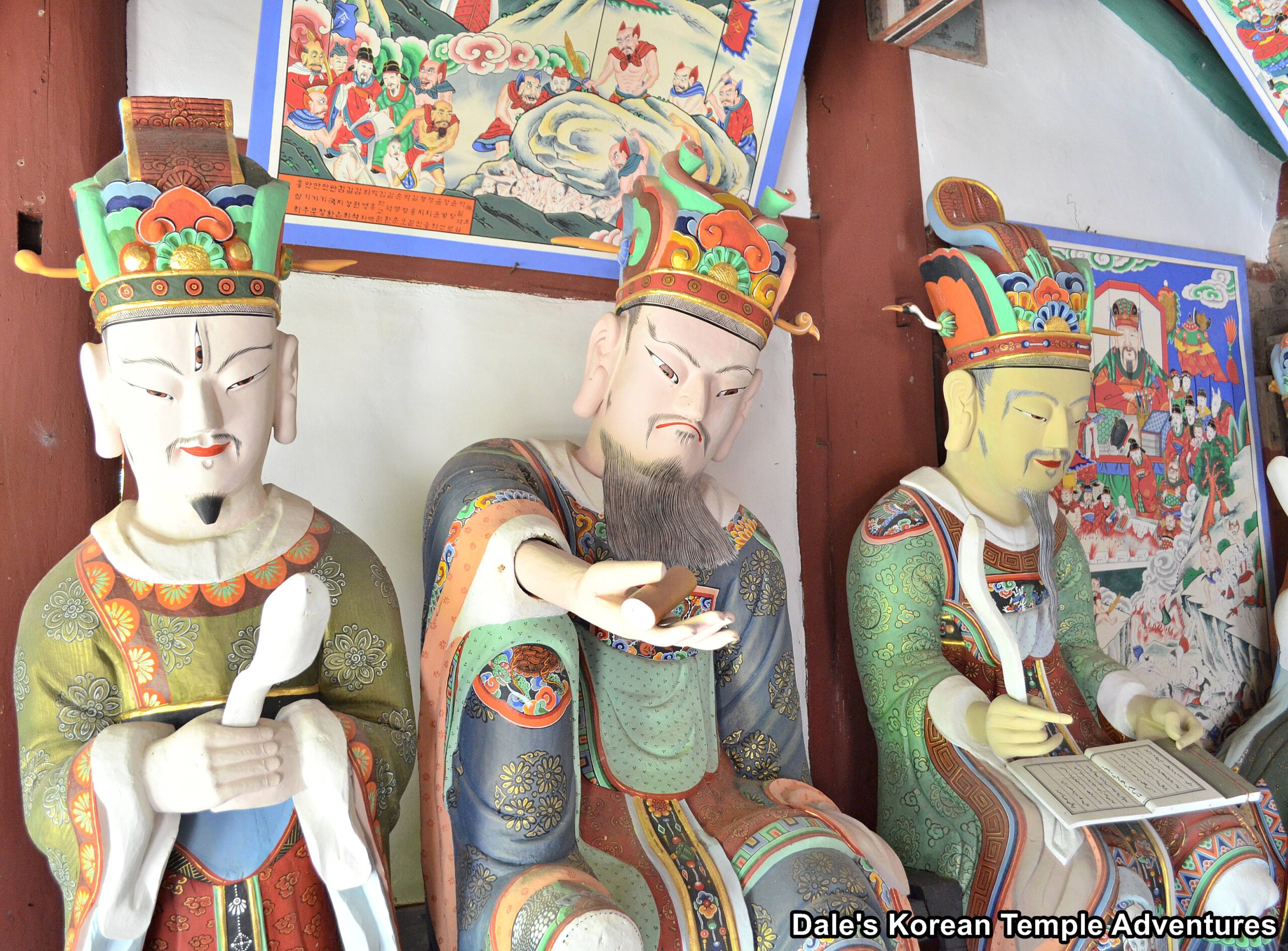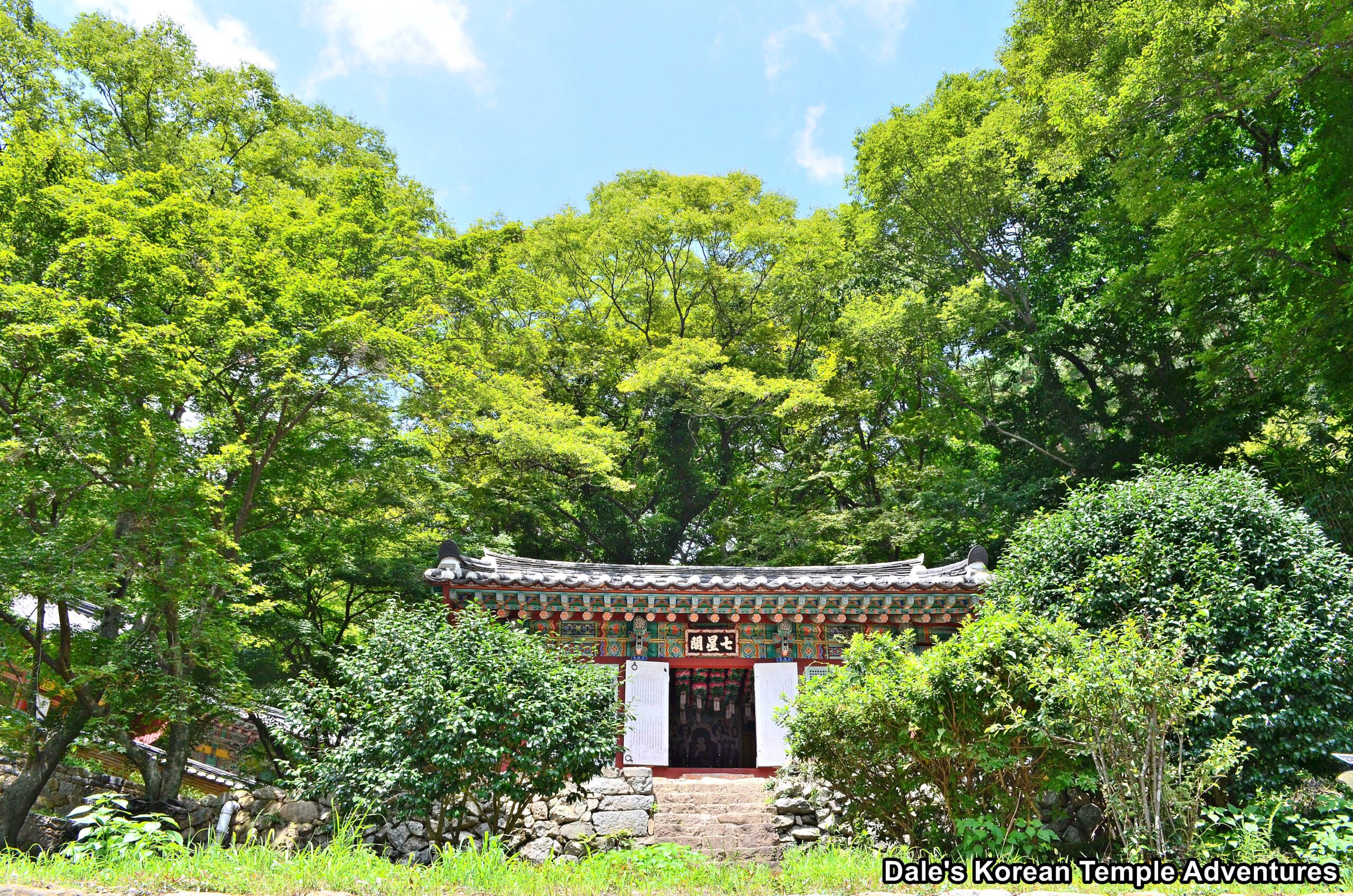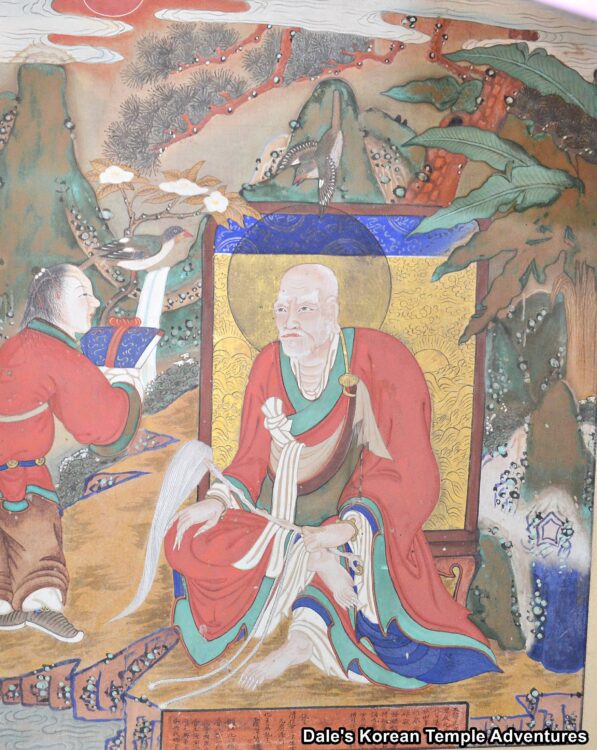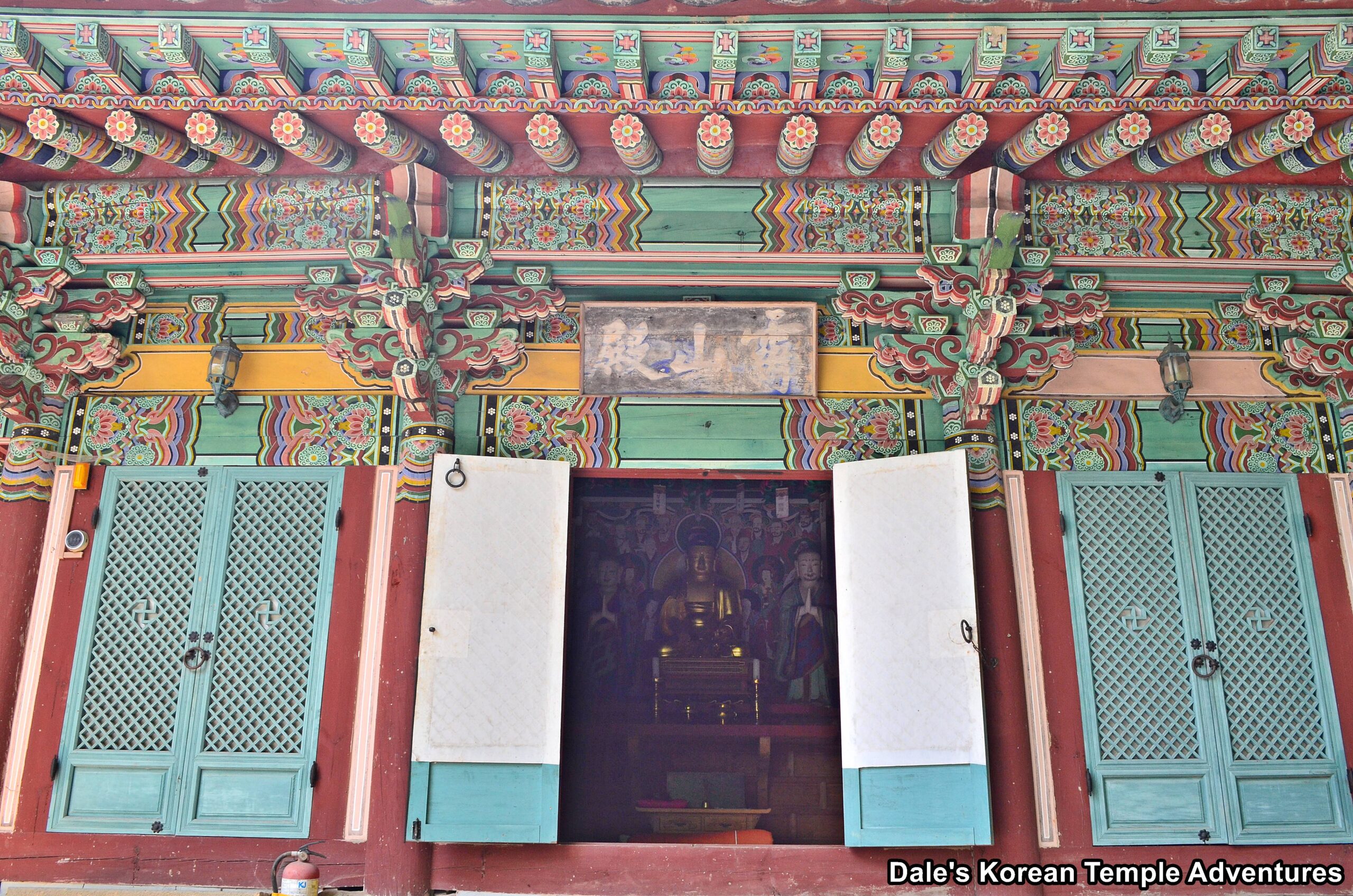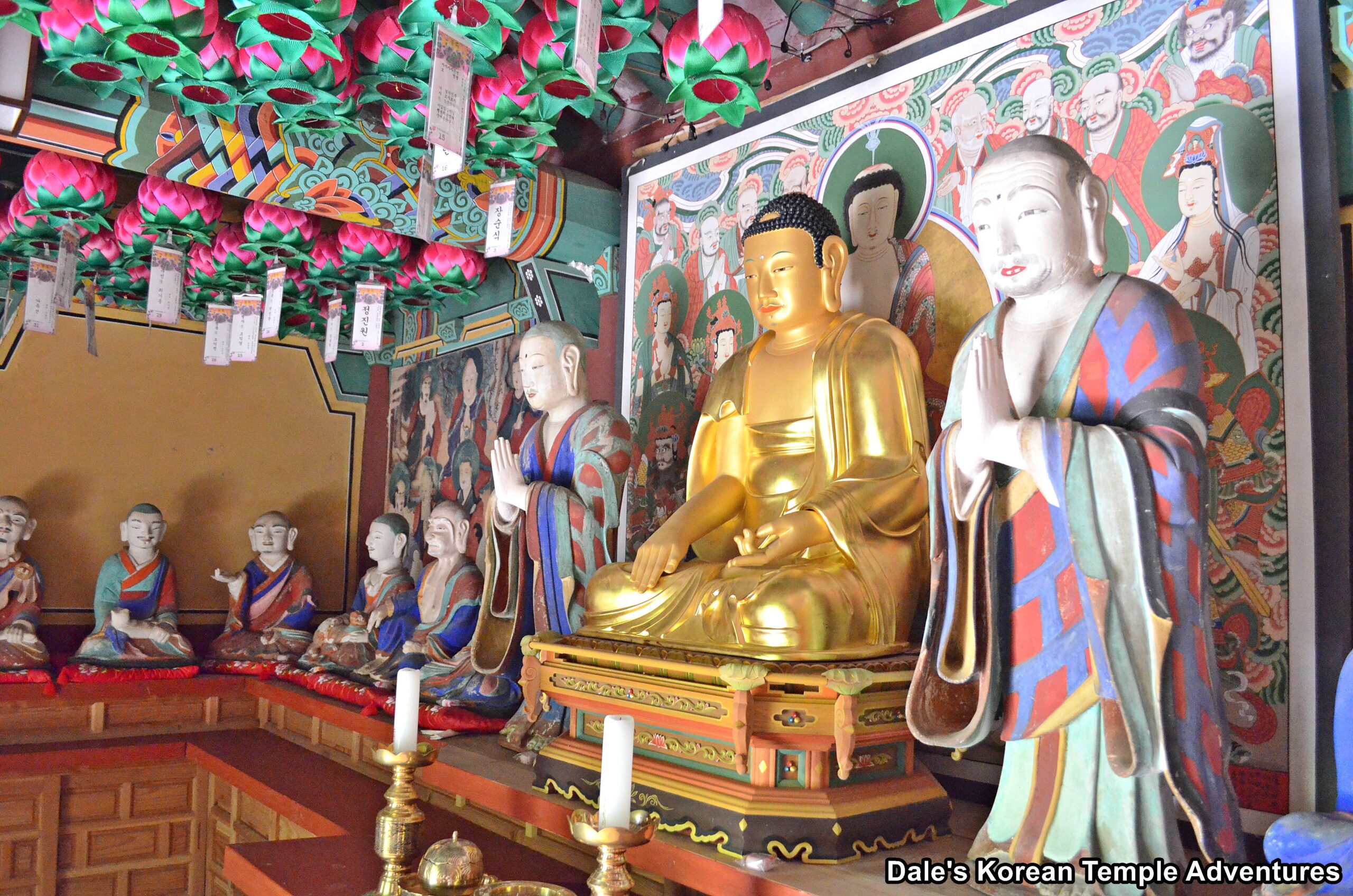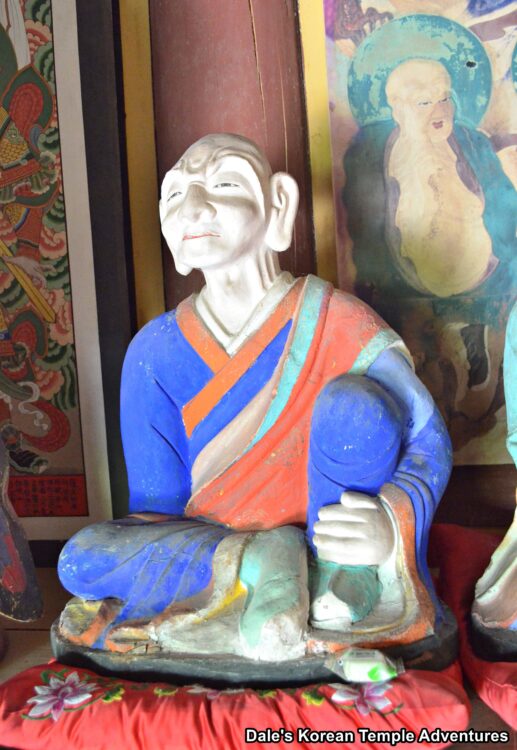Dabosa Temple – 다보사 (Naju, Jeollanam-do)
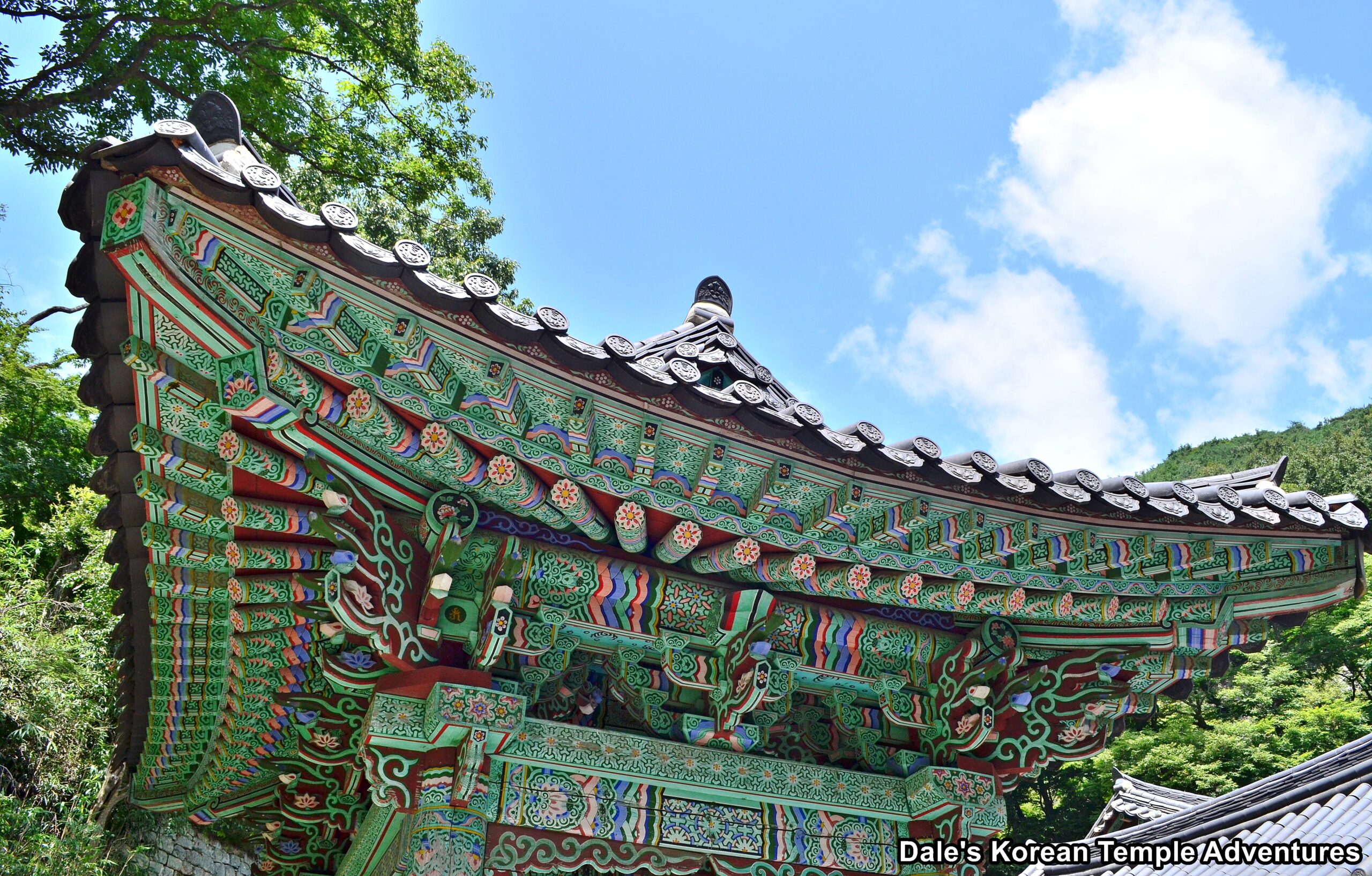
Temple History
Dabosa Temple is located on Mt. Geumseongsan (453.3 m) in Naju, Jeollanam-do. It’s believed that Dabosa Temple was first built in 661 A.D. by the famed monk Wonhyo-daesa (617-686 A.D.). However, another legend states that Dabosa Temple was in fact founded by a monk who was meditating on Mt. Geumseongsan after he had a dream that a large pagoda decorated with the seven treasures rose from the ground and Daboyeorae-bul (Abundant Treasures Buddha), or Prabhutaratna in Sanskrit, appeared from the pagoda. Dabosa Temple means “Abundant Treasures Temple” in English.
The temple is believed to have been rebuilt in 1184 during the Goryeo Dynasty (918-1392) by another famed monk, Jinul (1158-1210). And in 1594, the temple was rebuilt, once more, by yet another famous monk; this time, it was rebuilt by Seosan-daesa (1520-1604).
Dabosa Temple is located in a deep valley between the peaks of Odobong Peak and Dabokbong Peak. The temple is surrounded by thick mountain forests. The current temple buildings date back to the 19th century. Specifically, the Yeongsan-jeon Hall, the Myeongbu-jeon Hall, and the Chilseong-gak Hall were all rebuilt between 1878 to 1881. The current Dabosa Temple Daeung-jeon Hall was originally located in the nearby temple called Sillosa Temple. However, the Daeung-jeon Hall was moved to Dabosa Temple when Sillosa Temple was closed. During the Japanese Colonial Rule (1910-1945), the Daeung-jeon Hall at Dabosa Temple was used as a famous training place.
Dabosa Temple is home to a pair of Korean Treasures. They are the Hanging Painting of Dabosa Temple, which is Korean Treasure #1343. The other Korean Treasure is the Wooden Sakyamuni Buddha Triad and Clay Sixteen Seated Arhats of Dabosa Temple, which is Korean Treasure #1834. Additionally, the Daeung-jeon Hall is Jeollanam-do Cultural Heritage Material #87. And the Wooden Statues of Ksitigarbha Triad and the Ten Underworld Kings are Jeollanam-do Tangible Cultural Heritage #310.
Temple Layout
Dabosa Temple is located up a long valley; but before you turn to the left at the bend in the road, and near the mountain trail parking lot, you’ll see the old, unpainted Iljumun Gate that once showed the temple boundary. Now, it’s located about two hundred metres away from the main temple grounds at Dabosa Temple.
Finally approaching the main temple grounds, and making your way to the temple parking lot, you’ll first be welcomed by Dabosa Temple’s rather imposing four-story Haseong-dang Hall. This hall acts as the study halls, visitors centre, and administrative office. The fourth floor of the structure, which is the most traditional of the structure, and is also on the same level as the lower temple courtyard, is the Cheonbul-jeon Hall. It’s a bit tucked away, so even I missed it on my visit to Dabosa Temple.
To the left of the Haseong-dang Hall and the Cheonbul-jeon Hall is the Geumgangmun Gate at Dabosa Temple. Up a bit of an incline, you’ll be welcomed by this newly painted entry gate. Housed inside the Geumgangmun Gate are two standing statues dedicated to Narayeon Geumgang and Miljeok Geumgang – 나라연 금강 & 밀적 금강. You’ll also find two seated youthful images, one dedicated to Bohyeon-bosal (The Bodhisattva of Power) and the other dedicated to Munsu-bosal (The Bodhisattva of Wisdom). Bohyeon-bosal is riding the multi-tusked elephant to the left, while Munsu-bosal is riding the blue haetae to your right.
Having passed through the Geumgangmun Gate, and still making your way up the incline, you’ll turn to your right and enter the lower courtyard at Dabosa Temple. First up is the beautifully adorned Jong-ru (Bell Pavilion), which has a beautiful bronze Brahma bell housed inside it. Straight ahead of you is the historic Daeung-jeon Hall. Rather uniquely, the exterior walls of the Daeung-jeon Hall are adorned with fading white murals of pagodas. These paintings obviously harken back to the temple creation story and Daboyeorae-bul. At the front of the entry, which is a peculiar feature rarely seen at a Daeung-jeon Hall, is a railing and wood flooring. The wooden latticework adorning the front doors of the Daeung-jeon Hall are those of chrysanthemums, apricot flowers, and peonies. Stepping inside the main hall, you’ll be greeted by a triad of large statues. In the centre rests Seokgamoni-bul (The Historical Buddha). And this statue is joined on either side by Yaksayeorae-bul (The Medicine Buddha) and Amita-bul (The Buddha of the Western Paradise). Hanging on the left wall is the temple’s Shinjung Taenghwa (Guardian Mural). And on the far right wall is a mural dedicated to the Buddhist Three Jewels.
To the right of the Daeung-jeon Hall is the Myeongbu-jeon Hall. The exterior walls to the Myeongbu-jeon Hall are adorned with simplified dancheong colours. As for the interior, you’ll notice a green haired image of Jijang-bosal (The Bodhisattva of the Afterlife) on the main altar. And this statue is joined on either side by the Siwang (The Ten Kings of the Underworld). Both Jijang-bosal and the Siwang are Jeollanam-do Tangible Cultural Heritage #310, and they date back to 1659. In total, there are twenty-two of these historic statues housed inside the Myeongbu-jeon Hall, and they were made by nine monk-sculptors. They were later repaired in 1903. Completing the interior of the Myeongbu-jeon Hall are ten murals hanging above the heads of the Siwang statues. The murals depict the Underworld that each of the ten Siwang rule over.
Joining the Daeung-jeon Hall and the Myeongbu-jeon Hall in the lower courtyard are the monks’ residence and the upper body of a historic pagoda. Sadly, only the upper two stories of the pagoda still exist.
To the rear of the Daeung-jeon Hall, and up a flight of stairs, is the Chilseong-gak Hall in the upper courtyard. Housed inside this shaman shrine hall are three murals. In the centre hangs a more modern mural dedicated to Chilseong (The Seven Stars). To the left of this modern mural hangs an older mural dedicated to Sanshin (The Mountain Spirit), who is joined in this mural by a tiger with its mouth wide open. The final mural in the set of three, and hanging on the far right wall, is the mural dedicated to Dokseong (The Lonely Saint). Of the set, it’s the Dokseong mural that stands out. In the mural, Dokseong sits upon a golden chair. And both his finger and toe nails are rather long, which only adds to the overall age of Dokseong.
The final temple shrine hall that visitors can explore at Dabosa Temple is the Yeongsan-jeon Hall, which is up another flight of stairs to the left of the Chilseong-gak Hall. The exterior walls are similar to the dancheong colours that adorn the Myeongbu-jeon Hall at Dabosa Temple; but it’s the interior, with its Wooden Sakyamuni Buddha Triad and Clay Sixteen Seated Arhats of Dabosa Temple that’s the star. This collection of statues were first made in 1625, and they’re Korean Treasure #1834. There was a team of sculptors that created these statues that was led by the monk Suyeon. He was a leading Buddhist sculpture during the early part of the 17th century. Inside the statues, written prayers were found. Not only were there prayers, but the age of the statues and the names of the sculptures were also contained inside it, as well as the patrons that sponsored the production of the statues. The nineteen statues are masterfully designed, and the Nahan statues are colourful in their overall composition.
One thing that visitors can’t see at Dabosa Temple, but is a Korean Treasure nonetheless, is the Hanging Painting of Dabosa Temple. This Gwaebul is Korean Treasure #1343. The central image of the large mural, which measures 1,143 cm in length and 852 cm in width, is that of Seokgamoni-bul. The Historical Buddha is joined by smaller Bodhisattva images of Gwanseeum-bosal (The Bodhisattva of Compassion) and Munsu-bosal (The Bodhisattva of Wisdom). Joining these smaller Bodhisattva images are other Buddhas, as well, like that of Daboyeorae-bul (The Abundant Treasure Buddha) and Amita-bul (The Buddha of the Western Paradise). This large mural used to be kept at Boheungsa Temple on Mt. Geumseongsan. This Gwaebul was completed by nine monks including Uigyeom, and it’s believed to have first been painted in 1745.
How To Get There
From the Naju Bus Terminal, you’ll need to walk to get to the Gwangju Bank Bus Stop, which will take you about ten minutes (635 m). You’ll need to take the “Sunhwan 3 – 순환 3” bus. After six stops, or eight minutes, you’ll need to get off at the “Dabosa Entrance Stop – 다보사 입구.” From this stop, you’ll need to walk nine minutes (607 m) to get to Dabosa Temple.
Overall Rating: 7/10
Dabosa Temple is beautifully located on Mt. Geumseongsan in Naju, Jeollanam-do. Adding to this natural beauty are the statues inside the Myeongbu-jeon Hall of Jijang-bosal and the Siwang, as well as the paintings of Sanshin and Dokseong inside the Chilseong-gak Hall. But the main highlight to Dabosa Temple are the collection of statues of both the main altar triad and Nahan statues inside the Yeongsan-jeon Hall. They are all so descriptively rendered and vibrantly painted.
